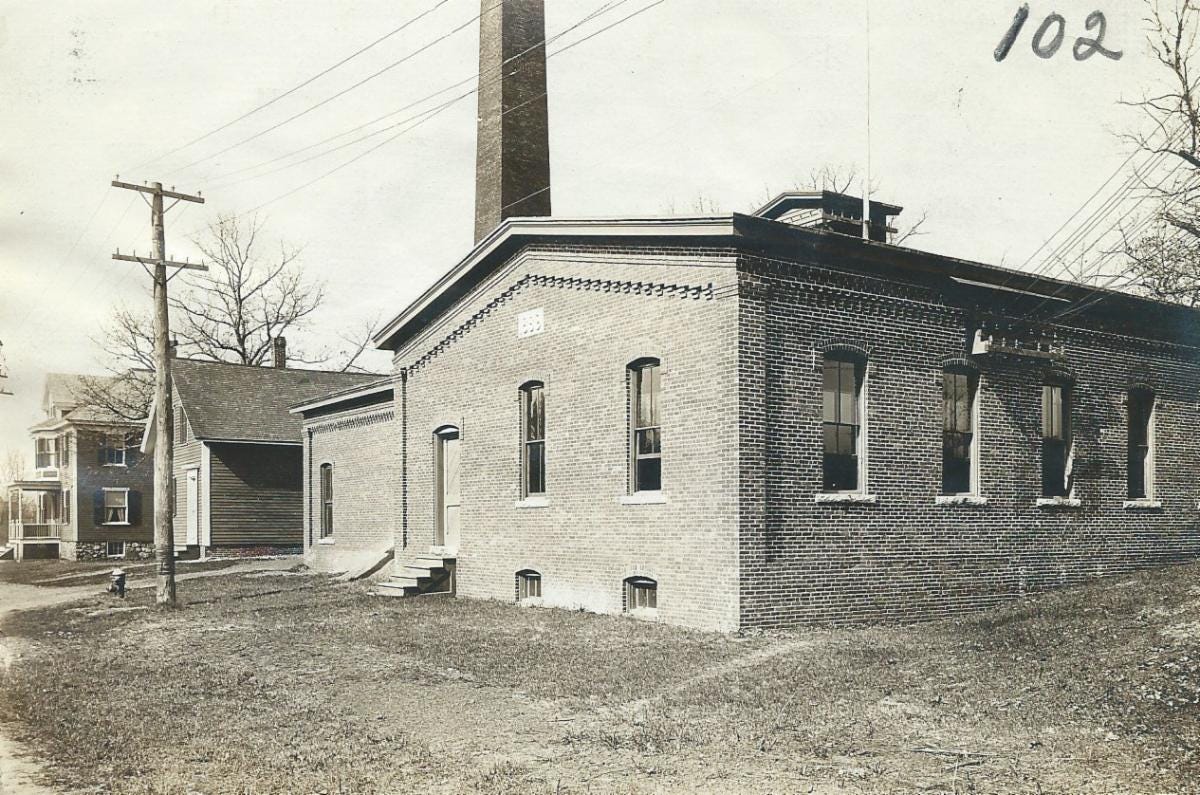From 1700 to 1900, electricity went from being a mere curiosity to an essential element of life.
ACHC #1987.598.5036, Andover Electric Light on Lupine Road c.1900
Thomas Edison and Joseph Swan's inventions brought practical light bulbs to the public. Cities experimented with electric street lights in 1879. Businesses used indoor lights for the first time in 1882. Further development of the grid allowed electricity to reach smaller communities.
Several local men jumped on the opportunity and founded the Andover Electric Company in 1888.
The idea of bringing electric lights to Andover was popular. Most businesses and many homeowners promised financial support. Selectmen approved the installation of a few experimental street lights in April 1889.
The experiment was promising but drew criticism for its prohibitive cost at a town meeting on April 12. The most notable critics were B. H. Wardwell and printer Warren F. Draper.
Draper believed residents would be quick to demand more lights and increase costs. He also noted that the town already operates a functioning network of oil lamps.
Proponents argued that the oil lamp network was insufficient. Electric lights were much brighter and could illuminate the same area with fewer bulbs.
There was also pressure among citizens to adapt to modern times and follow the precedent of other cities.
Support was strong despite the vocal opposition. The Selectmen finalized an agreement with the Andover Electric Company to power 57 street lights for three years at $2,800 per year. They appointed a Street Light Committee to determine the location of each light.
On April 19 the electric company bought a two-acre parcel on Lupine Road and built a power plant. At that point, they had $20,000 ($556,000 in 2021) capital including $5000 from Andover citizens. Construction of the plant concluded in July and work to install power lines and wiring began.
September 13 was the grand opening of the Andover Electric Company’s services. A large crowd gathered downtown and erupted into cheers for the occasion. A band played new pieces titled “Incandescent” and “Electric Light” as townspeople inspected the fruits of their tax dollars.
Reactions were positive. Some believed the light shunned away evil and brought a spiritual goodness to the town. Most demanded more lights as Warren Draper had predicted.
Within a week’s time, electric lights illuminated downtown buildings. Businesspeople proposed plans to introduce electric trains and streetcars.
Issues were infrequent. In late September the first bulb burnt out and citizens reported the first case of vandalism in October.
The locally owned Andover Electric Company would last for over 20 years. The Lawrence Gas Company acquired them in 1903. The Lawrence company went through consolidations until the Massachusetts Electric Company took over in 1962. The original electric company building stands today as part of a substation and features the marker “1889” on its facade.
The advent of electricity in Andover is one of countless stories of communities who witnessed a defining moment of innovation.
In this 1892 Sanborn map, you can see that in addition to the Lupine Road building, the Andover Electric Light Company also had a station on Railroad Street. The station continued to appear on later Sanborn maps as the Lawrence Gas Company. Sanborn maps, like this, can be found on the Library of Congress website.
The History Center also has Sanborn maps available for viewing in our research library, which is available by appointment. To inquire about a research appointment email info@andoverhistoryandculture.org.
Many thanks to volunteer Floyd Greenwood for researching and writing this Miscellany Mondays story!
Electricity changed life in many ways. What changes during your lifetime had a similar impact?






